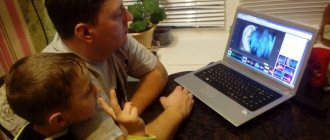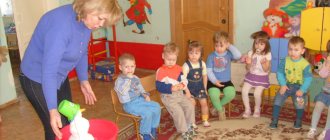The concept of activity and its structure
Man and human society cannot exist without activity. In the course of his activities, a person transforms the world around him, changes reality, including himself and the entire society, and also satisfies his needs.
Human activity is fundamentally different from animal activity. First of all, a person sets goals for himself, he has a conscious motive, he chooses from the means and methods available to him those that will be the most rational to achieve his goal. Animals base their activity on instincts, they have no conscious goal, they also do not choose methods and means, they do not create new tools, all their means have already been created by nature. Human activity is inherently systematic and productive, i.e. it creates something that did not previously exist in the natural environment. Animals are not capable of creating something new; their activity is always an adaptation to the external environment. And if the activity of an animal is genetically inherent in it, then in a person it appears only in the course of learning and development in society, in the process of socialization. Human activity is constantly becoming more complex as society develops, so it is socio-historical in nature.
Are you an expert in this subject area? We invite you to become the author of the Directory Working Conditions
The structure of activity is built in the following chain:
Object => subject => motive => goal => means => process => result
- Object is what the activity is aimed at;
- The subject is the one who performs the action;
- Motive is what motivates a person to perform an action;
- Goal is a conscious image of the result to which the activity is aimed;
- Means – methods, methods and objects with which you can achieve a goal;
- Process – the sequence of actions leading to the achievement of a goal;
- Result is the result of an activity, obtaining a final product.
Sensory and rational cognition
At the moment of assimilation of knowledge, each person uses a certain structure, the same for all people . It is based on the senses, as structural elements of cognitive abilities, identically involved, dictating the general laws of cognition.
The knowledge of each person includes 2 steps:
- sensory (empirical) – considering sensations, perceptions and ideas as the main form of genuine comprehension. This is the case when a person himself understands what is happening;
- rational - considering reason as the support, source and main measure of the reliability and infallibility of human aspirations. In this situation, a person not only understands, but is also able to explain and even prove what he understands to another.
Sensory cognition includes three multi-level forms, established from lower to higher:
- sensation;
- perception;
- performance.
Sensations are primary information about objects obtained with the help of analyzers; they are also the most primitive and do not reflect the integrity of the object:
- color;
- smell;
- taste;
- tactile sensations.
Perception is already a combination of several sensations and a more complex form of sensory acquisition. Fragmentary sensations merge into a holistically defined image. There is a separation of one object from another. Through perception, an adequate recognition of an object and the relationship of its images are achieved.
Representation is a transitional link between sensory and rational comprehension, containing sensory and rational elements of study. Its specific feature is the separation of the image from the object: the ability to represent the object in its absence. The ability to mentally operate an object without direct contact with it. In other words: use imagination and fantasy in relation to the object.
The prerequisites for rationality are:
- separation of thought from the subject;
- thinking as the completion of the generalization process, the formation of abstract concepts: matter, mass, time, space.
Rational cognition as a thinking process includes 3 forms of one-level order:
- concept;
- judgment;
- inference.
However, such a process is not feasible without such specific techniques of abstract logical thinking as:
- comparison;
- analysis;
- synthesis;
- induction;
- deduction;
- idealization;
- abstraction.
Thanks to them, conclusions are drawn. By comparing, analyzing and synthesizing the data obtained, a person forms his own conclusions. Comparison is the main method of mental activity.
Both stages are in organic unity, interconnection and interpenetration, passing into one another like a diffuse phenomenon. The system of human analyzers, as a stage of sensory development, is created for the perception of sensations, and rational thinking is created for forming conclusions based on the information received. This allows us to obtain the most objective conclusions while constantly pursuing the main goal of knowledge - the search for truth.
Practical activities
Among the various activities, practical activities are of great importance. It is a way of including a person in the world around him and actively influencing him in order to transform existing objects and create new ones. Through practical activity, a person understands his capabilities through experience, studies the world around him, and finds his place in it. As a result, his inner world changes, his spiritual life is filled.
Finished works on a similar topic
Course work The essence of practical, cognitive, evaluative activity 420 ₽ Abstract The essence of practical, cognitive, evaluative activity 270 ₽ Examination The essence of practical, cognitive, evaluative activity 250 ₽
Receive completed work or specialist advice on your educational project Find out the cost
Practice is realized in the course of subject-object and subject-subject relations; it is always of a social nature. It presupposes the existence of a certain culture of communication as a condition for its existence. In addition to the active transformation of the external environment, practical activity presupposes the communication of people in the course of their work, as well as a set of values, norms, and rules that ensure the purposeful nature of the activity.
The following forms of practical activity are distinguished:
- production practice - the production of material objects, this type of activity underlies all human life;
- technical activity - the transformation of certain devices created by man (artifacts), an element of the productive forces that determines the nature and method of social production;
- social practice - transformation of the social environment, social relations, can be revolutionary in nature;
- science is a special form of activity that turns into a direct productive force that also controls social processes.
Note 1
Thus, practical activity can be aimed not only at transforming material objects, but also at changing social relations and social practice.
The most important function of practical activity is the ability to test our knowledge and resolve the question of truth. Only through practice can truth be separated from error. However, practice opportunities are limited.



